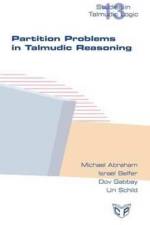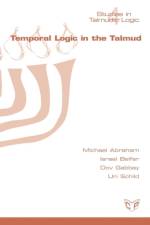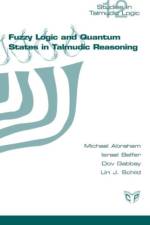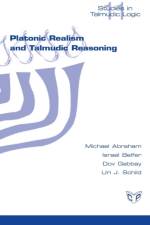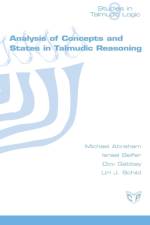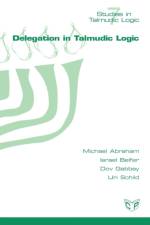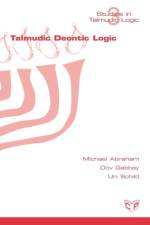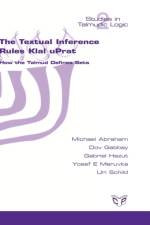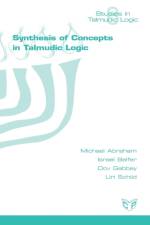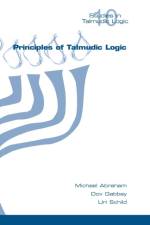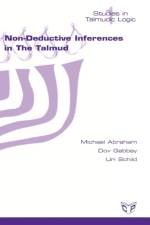Bøger af Michael Abraham
-
- From Germany to Palestine
138,95 kr. Günther prepares for a life on a kibbutz at a Zionist youth camp for eighteen months, experiencing friendship and solidarity, and even his first great love. But just one day before his longed-for departure, he falls into the hands of the Gestapo!Will Günther manage to escape and reach the rescue ship to Palestine?An exciting novel about a teenager's escape from Nazi Germany, based on a true story.
- Bog
- 138,95 kr.
-
- Bog
- 298,95 kr.
-
283,95 kr. This book deals with a problem that has been discussed quite a lot, both in the academic and the halachic literature, the problem of partitioning. The fundamental and well-known partition problem in the Talmud is the partition of lost property ("Two hold a garment") found in Baba Metzia 2a, and its generalisation ("n hold a garment"). The Talmud also deals with the problem of division of the estate of a deceased among creditors in Ketubot 93a.Our aim is to organise previous work, give a complete picture of the domain and add our original work. We specify what the basic assumptions are, similarities and dissimilarities between the problems and the various approaches to their solution. We give general case algorithms for these solutions. Where necessary we also prove the existence and uniqueness of the solutions.The book is partly in English and partly in Hebrew
- Bog
- 283,95 kr.
-
563,95 kr. This book studies Talmudic temporal logic and compares it with the logic of time in contemporary law. Following a general introduction about the logical handling of time, the book examines several key Talmudic debates involving time. The book finds that we need multi-dimensional temporal models with backward causation and parallel histories. It seems that two major issues are involved: 1 Actions conditional about future actions (Tenayim), connecting with backward causality 2 Actions involving entities defined using future events (Breira), connecting with ideas from quantum Mechanics The book concludes with a general comparative discussion of the handling of time in general law and in the Talmud.
- Bog
- 563,95 kr.
-
- Bog
- 458,95 kr.
-
463,95 kr. - Bog
- 463,95 kr.
-
463,95 kr. In this book we deal with combinations of concepts defining individuals in the Talmud. Consider for example Yom Kippur and Shabbat. Each concept has its own body of laws. Reality forces us to combine them when they occur on the same day. This is a case of "Identity Merging". As the combined body of laws may be inconsistent, we need a belief revision mechanism to reconcile the conflicting norms. The Talmud offers three options:1 Take the union of the sets of the rules side by side2. Resolve the conflicts using further meta-level Talmudic principles (which are new and of value to present day Artificial Intelligence)3. Regard the new combined concept as a new entity with its own Halachic norms and create new norms for it out of the existing ones.This book offers a clear and precise logical model showing how the Talmud deals with these options.
- Bog
- 463,95 kr.
-
448,95 kr. - Bog
- 448,95 kr.
-
428,95 kr. In this book we study the Deontic Logic of the Talmud. We find the system is different from the formal deontic logical system currently used in the general scientific community, both in its ethical aspects as well as in its legal aspects. We show that the Talmudic distinctions between Obligations and Prohibitions are not based on the manner of execution of actions (positive action or lack of action) and offer a suitable model for such distinctions.Our model distinguishes between the normative and practical aspects of the Talmudic legal and ethical argumentation and discusses several applications and clarifications to current so called paradoxes of Deontic Logic as related to Contrary to Duties and to legal and ethical practical decision making.
- Bog
- 428,95 kr.
-
428,95 kr. We analyse the Klal uPrat family of textual rules in the Talmud. We view them as common-sense practical rules for defining sets. Such methods do not exist in general common-sense logical systems, and they complement the existing common-sense (non-monotonic) deductive logics.
- Bog
- 428,95 kr.
-
498,95 kr. This book returns to the discussion in volume 1 on analogy and induction,and analyses their substance. The first part distinguishes between twokinds of logic: One kind based on union of the common features, and theother kind based on synthesis of different features. In the second part ofthe book we propose a formal scheme for synthesis of concepts. The thirdpart analyses various mechanisms for kidushin and kinyan, which form amathematical group.
- Bog
- 498,95 kr.
-
177,95 kr. This book puts forward new logical systems suitable for modelling Talmudic and Biblical reasoning and argumentation.The Talmud is very logical. It is said that when God gave Moses the Ten Commandments, He also gave him additional laws and rules of logic to enable human beings to derive more laws.Together with colleagues the authors have already written 8 books on the logic of the Talmud and the project will involve 15-20 volumes. The authors have discovered principles which can be exported to current research in scientific communities, as well as human common sense reasoning and laws as tackled by religious thinking.Topics in this book include:1 Non-deductive Inference in the Talmud:The book includes a new topological matrix method for analogical reasoning, completely new to existing AI methods which rely on metric distances.2 The Textual Inference Rules Klal uPrat. How the Bible Defines Sets:Traditional set theoretic methods for defining sets are either by enumeration of its elements or by a predicateformula. The biblical way is a common sense combination of the two, approximating the set from above and from below by predicates, supplemented by a small number of typical members of the set.3 Talmudic Deontic Logic:The Talmud has its own Deontic Logic, free of the traditional paradoxes.4 Temporal Logic in the Talmud:The Talmud allows for special conditionals with antecedents depending on the future and consequents valid in thepresent. This new type of logic allows for backwards causality and connects with aspects of Quantum Logic.5 Resolution of Conflicts and Normative Loops in the Talmud:The book deals with Talmudic loop checking methods that can be widely applied to handling loops in AI and logic.6 Delegation and Representation in Talmudic Logic:Talmudic systems of delegation are innovative and apply to modern day to day computer delegation and access control.This book is of great interest to researchers in AI and Law, in Argumentation theory, and in Pure and Applied logical systems, as well as students of Talmudic reasoning and debate.
- Bog
- 177,95 kr.
-
423,95 kr. - Bog
- 423,95 kr.



